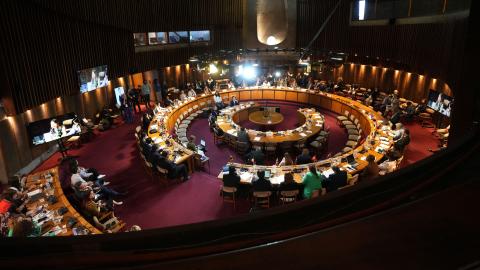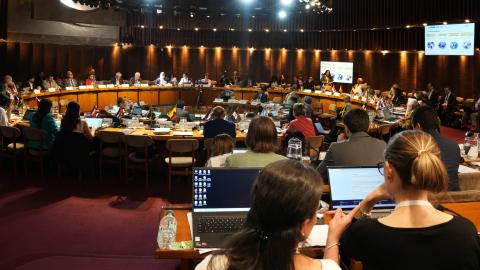Press Release
(April 29, 2024, Santiago, Chile) –The new report Financing Food Security and Nutrition in Latin America and the Caribbean, jointly produced by the Food and Agriculture Organization of the United Nations (FAO), the Economic Commission for Latin America and the Caribbean (ECLAC), the World Food Program (WFP) and the Inter-American Institute for Cooperation on Agriculture (IICA), warns that the costs of not combating hunger and malnutrition may be higher than the costs of solutions to ensure food security and better nutrition.
According to the report, the cost of inaction in the face of the impact of hunger and malnutrition represents an average of 6.4% of the GDP of the countries studied. In contrast, the average cost of working to close the income gap with transfers for access to healthy diets is 1.5% of GDP, not including management and implementation costs.
The report identifies different types of financing for food security and nutrition in Latin America and the Caribbean and their relationship to regional GDP: (i) financing of food consumption and production; (ii) public spending related to agricultural and non-contributory social protection expenditures; (iii) international development flows; and (iv) financing from the banking system and capital markets.
The publication highlights the importance of investing in agriculture and the need for other interventions to reduce food insecurity and malnutrition. It shows that the main problem does not stem from a food shortage, but from a lack of physical and economic access, especially in rural areas with high level of poverty.
The document underlines the need to estimate the costs associated with implementing policies, programs, and interventions as a prior element to analyzing food security and nutrition financing. It also highlights the importance of improving information collection on the different financing flows.
“Aligning social, economic, and trade policies and the objectives of improving food security and nutrition in our Latin America and the Caribbean region is critical, even more so when food spending represents 22% of regional GDP,” said Mario Lubetkin, FAO Assistant Director-General and Regional Representative for Latin America and the Caribbean.
Lubetkin also emphasized that comprehensive interventions that address income and access to nutritious food, consumer preferences, regulations on nutritional front-end food labeling, and support to family farming through public procurement systems can contribute to strengthening agrifood systems and equitable access to healthy diets.”
For his part, ECLAC Executive Secretary José Manuel Salazar-Xirinachs indicated that “the incidence of extreme poverty in the region was 11.4% in 2023, according to ECLAC estimations, which means that more than 70 million people in the region do not have sufficient income to purchase a basic food basket.”
“That incidence is higher among women, the indigenous population, and people living in rural areas. Therefore, it is imperative to foster inclusive public policies and promote better targeting of public spending, which can directly impact populations in vulnerable situations. Currently, more than half of all cash transfers in Latin America and the Caribbean go to households with per capita incomes above the poverty line,” said Salazar-Xirinachs.
“Lack of income to access a healthy and nutritious diet is among the main causes of hunger and food insecurity in Latin America and the Caribbean. In fact, this region has the most expensive healthy diet in the world,” said Lola Castro, WFP regional director for Latin America and the Caribbean, adding that ‘it is unacceptable that the most vulnerable populations continue to pay such a high cost on account of undernutrition, overweight and obesity or double burden of malnutrition when the continent produces enough food to feed its entire population.’
The Director General of IICA, Manuel Otero, said that “the task ahead of us now is to conduct similar analyses at the country level in the context of comprehensive plans and programs for strengthening and improving food systems, operationalizing the objectives, instruments and institutional framework, with a clear estimate of costs and, of course, their financing, taking a broad view of the six main financial flows, as set out in the document.


